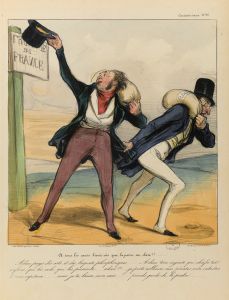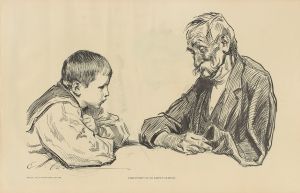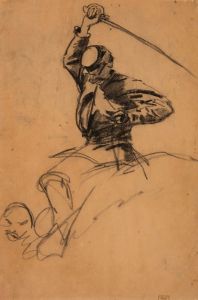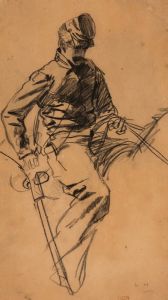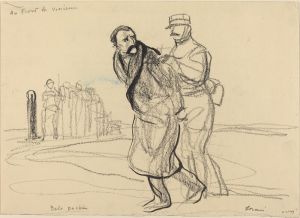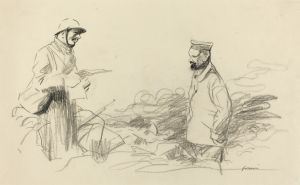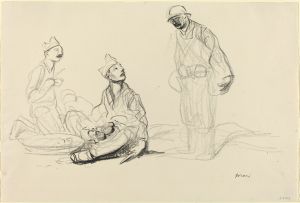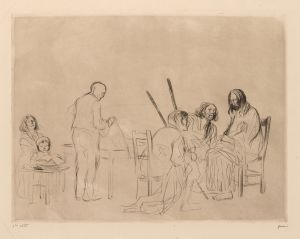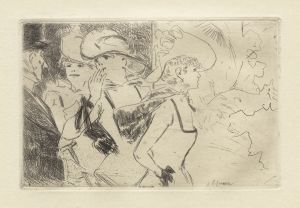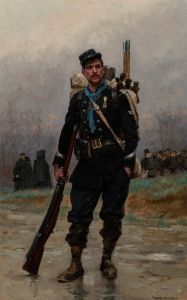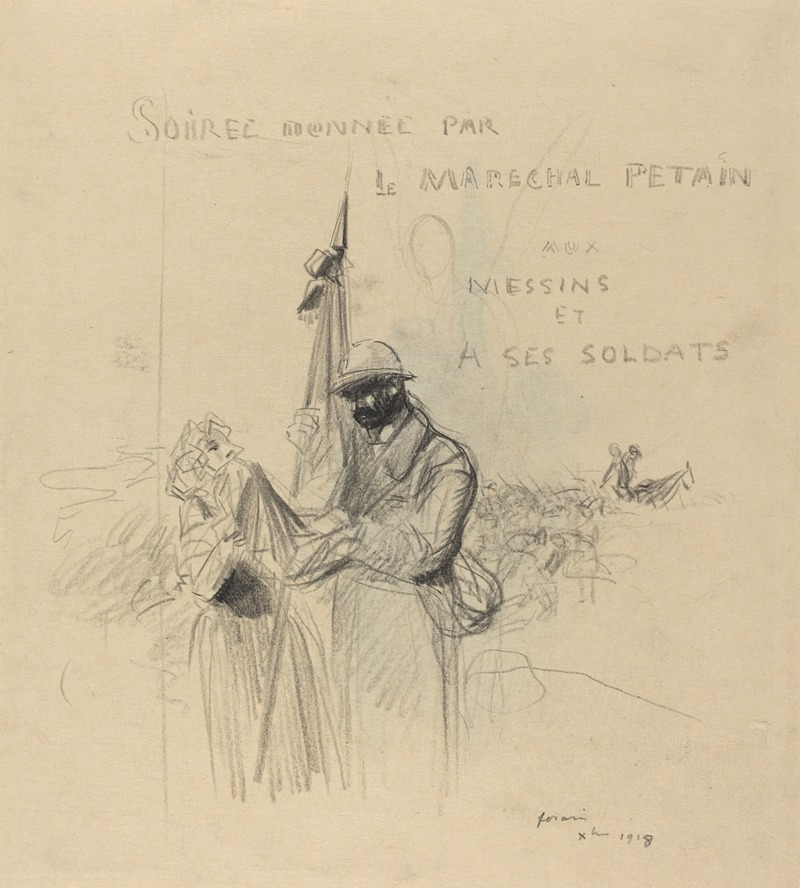
Le Baiser du Drapeau
A hand-painted replica of Jean-Louis Forain’s masterpiece Le Baiser du Drapeau, meticulously crafted by professional artists to capture the true essence of the original. Each piece is created with museum-quality canvas and rare mineral pigments, carefully painted by experienced artists with delicate brushstrokes and rich, layered colors to perfectly recreate the texture of the original artwork. Unlike machine-printed reproductions, this hand-painted version brings the painting to life, infused with the artist’s emotions and skill in every stroke. Whether for personal collection or home decoration, it instantly elevates the artistic atmosphere of any space.
Jean-Louis Forain (1852-1931) was a French painter, lithographer, watercolorist, and etcher, known for his satirical depictions of Parisian life. He was associated with the Impressionist movement and later became a member of the Société Nationale des Beaux-Arts. Forain's works often focused on the social and political issues of his time, and he was known for his keen observation and sharp wit.
One of Forain's notable works is "Le Baiser du Drapeau" (The Kiss of the Flag). This painting, created in 1914, is a poignant representation of the patriotic fervor that swept through France at the onset of World War I. The painting captures a moment of deep emotional significance, as it depicts a young soldier kissing the French flag before heading off to the front lines. The act of kissing the flag symbolizes the soldier's devotion to his country and his willingness to sacrifice for the greater good.
"Le Baiser du Drapeau" is characterized by Forain's distinctive style, which combines elements of realism with a loose, expressive brushwork. The composition is intimate, focusing closely on the soldier and the flag, which are rendered with a sense of immediacy and urgency. The background is kept minimal, drawing attention to the central figures and heightening the emotional impact of the scene.
Forain's use of color in this painting is also noteworthy. The red, white, and blue of the French flag stand out vividly against the more subdued tones of the soldier's uniform and the background. This contrast not only emphasizes the flag as a symbol of national pride but also highlights the personal sacrifice of the individual soldier.
The context in which "Le Baiser du Drapeau" was created is crucial to understanding its significance. In 1914, Europe was plunged into the chaos of World War I, and France was one of the major participants in the conflict. The war brought about a wave of nationalism and a sense of duty among the French people, many of whom volunteered to fight for their country. Forain himself was deeply affected by the war, and his works from this period reflect his concerns about the human cost of the conflict and the impact on French society.
"Le Baiser du Drapeau" was well-received at the time of its creation and remains an important work in Forain's oeuvre. It is a powerful reminder of the personal and collective sacrifices made during wartime and serves as a testament to the enduring spirit of patriotism. The painting is housed in the Musée d'Orsay in Paris, where it continues to be appreciated by visitors for its emotional depth and historical significance.
In summary, Jean-Louis Forain's "Le Baiser du Drapeau" is a significant work that captures the patriotic spirit of France during World War I. Through its intimate composition, expressive style, and poignant subject matter, the painting conveys the deep emotional and personal sacrifices made by soldiers and the broader impact of the war on French society.






